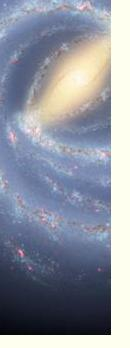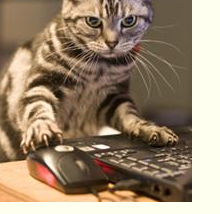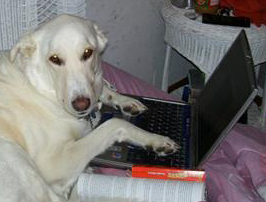
Neobeasts were first made as test beds for neohumans. Later, they were created from a strange mixture of motives – as an irresponsible form of genetic art, and from a strange desire for nonhuman companionship, to compare our thoughts and feelings with those of others who are truly Other (for this was before contact with aliens).
Whatever their species, neobeasts were given speech, a humanlike lifespan, lowered fertility, and color vision, if they did not already have these things. Each species was also given markers – features by which they could be easily distinguished from their original stocks.
In most Terran societies, neobeasts are given the default status of legal minors, with guardians, but can take a test to be granted legal adulthood. In the more liberal societies, some species – the apes, birds, and elephants, most often – are given automatic adult status at a certain age, as humans are. Classing neobeasts as chattels, even if protected by strong humane laws, is the sort of thing that gets the Institutes of Souls and Justice interested in you.
Many animals, Terran and alien, have been uplifted into neobeasts, but the following are the most widespread and best known:
These animals are so rare in the original forms that the only real markers are the longer thumbs. Their average IQ is around 100. They were among the testbed species. Many societies automatically give them legal adult status on maturity. Their psychologies are otherwise close to human, with some species-related trends:
These look like bottlenose dolphins but have black points on white, like a Siamese cat. They have IQs in the eohuman range. Their families are "pods" of up to a dozen, in which males and females form transient relationships. Both males and females form more permanent friendships with members of their own sex, sometimes siblings, usually in pairs but occasionally in triples. Neodolphin culture has gone through many different ways of coping with their lack of hands. They are restless, athletic, and playful.

For he is an instrument for the children to learn benevolence upon.
For every house is incomplete without him and a blessing is lacking in the spirit.
For the Lord commanded Moses concerning the cats at the departure of the Children of Israel from Egypt.
For every family had one cat at least in the bag.
— "For I will consider my Cat Jeoffry," from "Jubilate Agno," by Christopher Smart
These cats average 10 to 12 kgs, which is their main marker, though their heads are noticeably more highly domed than those of eocats. Their IQs vary widely but average about 80; only a minority are legal adults. The legal adults form polygamous, lion-like prides, leaving a large population of bachelor males. They are not particularly sarcastic or insolent. Actually, they tend to be shy, and are famous for their patience and keen observation. But they have little regard for hierarchy and tend to treat everyone as peers outside of parent-child relationships and their analogs. This and the fact that they sometimes cultivate a forceful persona to counteract their small size, gives them a reputation for chutzpah.

Now this is the Law of the Jungle—as old and as true as the sky;
And the Wolf that shall keep it may prosper, but the Wolf that shall break it must die.
— "The Law of the Jungle," from The Jungle Book, by Rudyard Kipling
These dogs average 50 to 60 kgs and have short coats, upright ears, and broad muzzles. Their heads are highly domed for dogs. Their actual marker is their tiger-striped coats, in various colors. Their IQs vary widely but average about 80; only a minority are legal adults. The legal adults form monogamous families. They are stereotypically earnest, loyal, and enthusiastic. Among legal adults with more sophisticated demeanors, the enthusiasm turns to determination and the earnestness may become overlaid with some cynicism, but the traits are usually still there. A treacherous dog is shocking.
How many elephants does it take to change a light tile?
One, but first they lead everyone out of the dark room, check to make sure no one got left behind, make a perimeter patrol, and check the circuit breakers, THEN change the tile and bring the wiring up to spec.
— Chat.Uplift.Archive.[elephant jokes]
Neoelephants are considerably smaller than unmodified elephants, weighing only three to four tons. They have four boneless fingers at the tips of their trunks, and both males and females have tusks. Their average IQs are in the human range; many societies automatically grant full citizenship to adults. They form herd-type families of half a dozen to two dozen. These herds are either closely related females and their juvenile children or groups of males who may or may not be related. Jockeying for position in the hierarchies is done with no more bellowing and shoving than among humans. Less, in fact, because the elephants are prone to be cautious and anxious, like their natural stock; their designers felt it was a good idea for very large, strong people to be habitually careful. As a result, elephantine meticulousness has become a stereotype. They do have good memories, too.
Neocoons are larger than unmodified raccoons, averaging 20 to 25 kgs. They are also marked by the strong counter-coloring of the coat on their body – dark on the back, pale on the belly – and by the variety of colors they come in. However, non-sapient raccoons have long been domesticated as pets and sometimes come in similar color patterns. Their forepaws are hands as good as human, but they retain their quadrupedal gait. About half have IQs high enough to qualify as legal adults. They usually live singly, or with one or two legal minor neocoons, who may be biological or adopted children. About half the legal minors among neocoons live with other neocoons. Neocoons typically live in human communities, where they stereotypically have independent, slightly irascible personalities. Driven by human expectation as much as anything else, they have a tradition of high-quality handcrafts.
Corvans look like jays, crested, but are the size of eagles and marked like magpies, with white body and black extremities. Their average IQ is 100. Many societies automatically give them legal adult status on maturity. They form monogamous families, generally live in aviary colonies within human communities, and have overall psychology that is disarmingly human. They are noted for:
Psitticans look like eagle-sized cockatoos, crested. Their plumage comes in varying shades of blue, with accents of other colors on wings, tail, head, and crest. Their average IQ is 100. Many societies automatically give them legal adult status on maturity. They form monogamous families, live integrated into human communities, and have general psychology even more human than that of corvans. They are noted for:
Fusions are organisms created by combining two or more embryos. Hybrids are organisms derived from more than one species, though in this context it means hybrids of far-removed species, produced by biotechnology. There are few examples of people produced by fusion or hybridization, and they are generally transient.
In the process of terraforming Venus, the Acrotects of Earth found it would be expedient to have a tough, strong labor force for a few centuries. They built massive bodies for AIs and recruited neoelephants, of course, but also decided that, for best economy, they needed biological labor adapted to the climate. They already had forms of livestock gene-tooled to the Venusian desert. It was simple (for Acrotects) to create composite embryos by wrapping human ectoderms around a desert-ox mesoderm and endoderm, and add some genetic tweaks, hormonal controls, and symbiotic therapy.
The result looked a lot like a wingless and furless shedu, a man-headed bull. A few thousand of these, all male, were created to haul and push as needed in the great desert construction projects. An unknown number remain alive today.
Neurologically, Venus-bulls are completely human. In personality, they are cheerful, easy-going, and not very bright. And, of course, industrious. Physically, they weigh about a ton and, like Venusian desert-oxen, have feet like a camel's and no pelt. Various metabolic, circulatory, and symbiotic adaptations make them extremely resistant to heat and dryness, but correspondingly vulnerable to chill and damp. Since they are composites of human and bovine tissue, without a genome of their own, they do not breed true.
These fusions are even easier to produce than Venus-bulls, being man-headed gorillas. They have been produced several times as troops and labor, by parties that wanted the higher aggression and sociality of a man combined with the strength and four hands of a gorilla, for use in space for combat or construction.
The Thuban Domain Agrians, an extreme genarchy, created these dog-human hybrids for the enhanced social cohesion produced by canine loyalty and sharp perception of body language. While they were at it, they took the opportunity to include enhanced senses of smell and hearing, and cast-iron stomachs. Additional gene-tooling ensured high energy and endurance. The new features were loaded onto the Y chromosome, so dog-soldiery is passed from father to son, and all dog soldiers have human mothers.
In many dog soldier groups, tasks are often done in "couples," pairs of senior and junior dogs (reckoned not by age but by experience in the task at hand), called "dog" and "pup." The pairs need not match up with friendships or other relationships. Group sizes are often expressed in "couples," e.g. "fourteen couple dogs," meaning twenty-eight.
Since the key canine features of dog soldiers are neurological and metabolic (or internal, as with the anatomies of nose and inner ear), the result looks quite human. Depending on culture and circumstance, dog-soldiers may pass for human or may take cosmetic mutations for dog-like pelts.
Dog soldiers have spread far beyond the Thuban Domain and have been copied several times, too. Dog soldiers have fully human intelligence and are just as keen to command as to obey; therefore, they have often wound up in positions of command over humans; the Izar Republic was founded by dog-soldiers, who still dominate its military and executive classes.
These were human-gorilla hybrids created to supply colonists to high-gravity planets. They were reasonably successful and merely looked like large, very robust humans. They were inter-breedable with mainline humans. Some populations remain to this day, and they are rumored to have been gene-donors for Fortis neohumans.
Return to Vaster
Return to Wind Off the Hilltop
Copyright © Earl Wajenberg, 2010